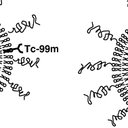Clinical features of 66 lymphoma patients presenting with a fever of unknown origin.
Ключови думи
Резюме
OBJECTIVE
To investigate the clinical characteristics, diagnostic approaches, short-term efficacy of treatment and prognosis of lymphoma patients presenting with a fever of unknown origin (FUO).
METHODS
We reviewed the records of 132 patients finally diagnosed with lymphoma in Huashan Hospital, half of whom initially presented with a FUO. The other 66 lymphoma patients without a history of FUO were diagnosed within a month when several patients in the FUO group were also diagnosed.
RESULTS
The patients presenting with a FUO were predominantly young men (71.21%, p=0.35) characterized by a temperature ≥ 39°C (55/66, 83.33%). Compared with the non-FUO group, patients in the FUO group more often had pancytopenia and hypohepatia, 61.54% with hypoalbuminemia (p<0.0001), 15.50% with significantly elevated lactate dehydrogenase (LDH) (p<0.0001), 92.45% with elevated serum β(2) microglobulin (p=0.017), 93.48% with elevated urine β(2) microglobulin (p=0.002) and 30.77% with elevated alkaline phosphatase (p=0.001). Ninety-four percent of the FUO patients had aggressive lymphomas (p=0.012), with a poor performance status (96.97%, p=0.003), stage III/IV disease (96.97%, p<0.0001), night sweats (21.21%, p=0.026), unexplained weight loss (46.97%, p=0.002) and more than one extranodal site involved (65.15%, p=0.002). The patients in the FUO group also showed poor prognoses, and most of them were in the high-intermediate or high risk classification of the disease (96.61%, p<0.0001), with a low complete remission (CR) rate (61.11% vs. 93.75%, p=0.043). Twenty-one (15.91%) of all the patients were diagnosed based on the finding of lesion sites by Positron Emission Tomography/Computed Tomography (PET/CT) scanning, which had not been detected by conventional scans.
CONCLUSIONS
Lymphoma presenting as FUO has a rapid progression and poor prognosis, and is difficult to diagnose. PET/CT scans can provide complementary information for an etiological diagnosis of a FUO and biopsy examinations are significant to establish an early diagnosis for patients presenting with a FUO.




